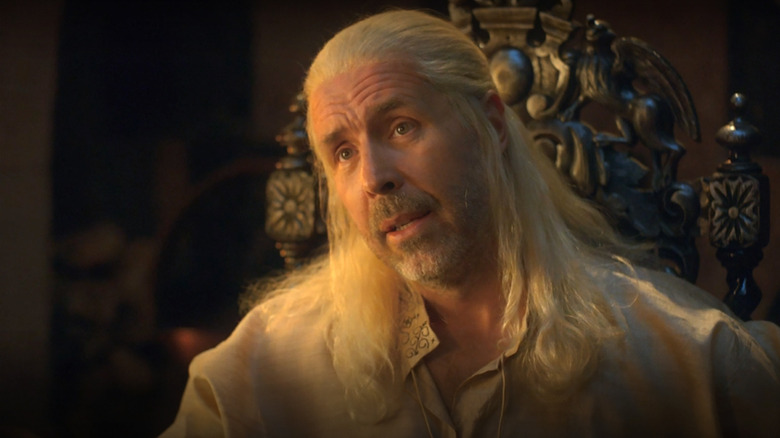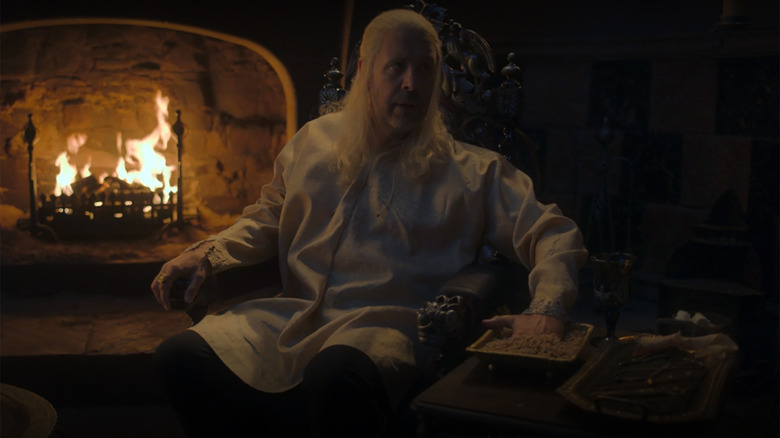House Of The Dragon's Nasty Medical Practices Have A Basis In Reality
Getting sick or injured in the Middle Ages was no picnic, and for the characters in the fantasy world of "House of the Dragon," medicine is still pretty medieval. The series premiere showed audiences just how bloody and brutal birth can be when men take it into their own hands, and the second episode, "The Rogue Prince," delivers a scene depicting the treatment for gangrene and infection. King Viserys (Paddy Considine) has been having a hard time sitting on the Iron Throne without getting little nicks and cuts. The Iron Throne legendarily injures those who aren't fit to sit on it, as the swords that jut out in every direction have not been dulled in any way. Viserys has been having a tough time as a ruler and a father, and only the strongest can hold power over Westeros. His brother Daemon (Matt Smith) or daughter Rhaenyra (Milly Alcock) might have an easier time with the sharp seat, but Viserys is clearly not the kind of king that commands or inspires with any real authority.
Unfortunately for Viserys, the Iron Throne isn't the cleanest thing, and a cut he got on his pinkie finger has gotten infected and is starting to rot. He turns to the maesters for help and they recommend cleaning the wound with maggots. The little wormy guys crawl over Viserys' finger and munch at the dead flesh, helping to clean the wound. While this might seem like the stuff of fantasy, it's actually a technique that humans have used for centuries to fight infection, and some doctors are still using it today.
Fly larvae are our friends, sorta
Viserys seems a little unsettled by the idea of sticking his hand in a bowl of worms and letting them eat part of his hand — and who could blame him? — but the maester explains that the baby bugs will help remove the dead flesh and clear the infection. This cleans the wound better than any liquid or scrubbing, and allows for the raw flesh to mend itself. Fly larva, also called maggots, have been used by humans for debridement of wounds for centuries, going back as far as Mayan healers who soaked bandages in animal blood to attract flies and encourage maggot infestation. They have been used throughout the ages and were thought of as a potentially miraculous wound treatment as recently as the 1930s, but the practice diminished as antibiotics took over. In the age of antibiotic-resistant bacteria, however, doctors are once more turning to this stomach-churning but apparently scientifically-proven practice.
The blowfly larva used for the treatment of certain kinds of lesions and infections today do a pretty good job removing damaged tissue and only leaving the good stuff. They also secrete chemicals that have antibiotic properties, helping to treat infections and promoting new skin growth. The concept is pretty gross, but also helps save limbs and sometimes lives. Here's hoping those wiggly fellas can work their magic on Viserys, or he's going to need a new little finger.
New episodes of "House of the Dragon" premiere Sundays on HBO and HBO Max.

